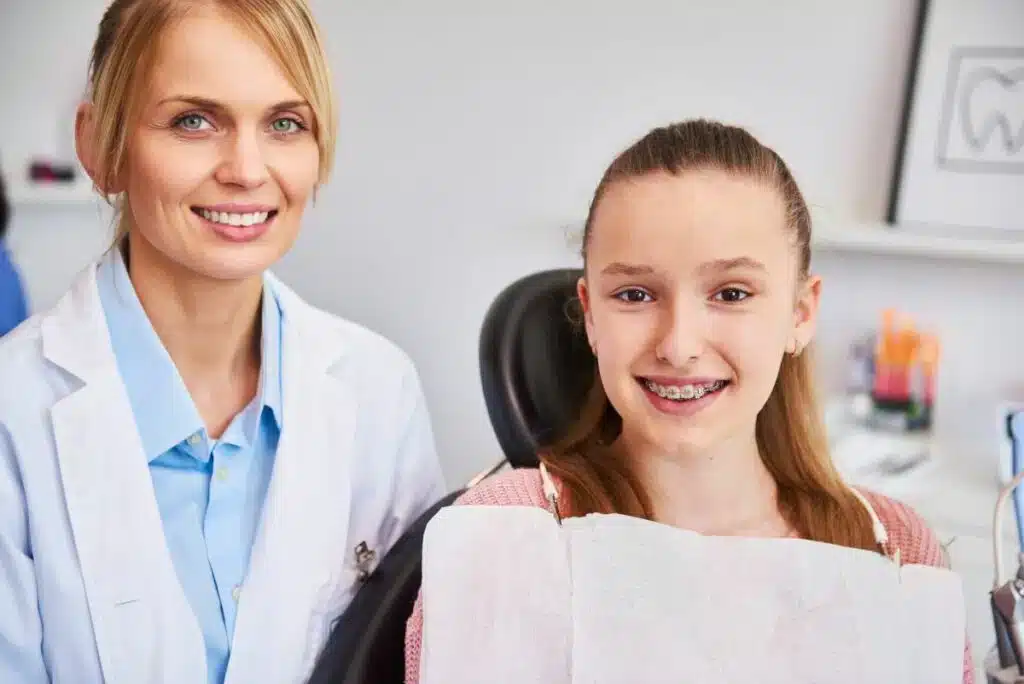The 6-Minute Rule for Causey Orthodontics
Wiki Article
The Of Causey Orthodontics
Table of ContentsThe 8-Minute Rule for Causey OrthodonticsThe 2-Minute Rule for Causey OrthodonticsCausey Orthodontics Fundamentals ExplainedAbout Causey OrthodonticsGetting My Causey Orthodontics To Work
Disregarding occlusal relationships, it was common to remove teeth for a selection of dental concerns, such as malalignment or congestion. The idea of an intact teeth was not commonly valued in those days, making bite relationships appear pointless. In the late 1800s, the concept of occlusion was essential for creating trusted prosthetic substitute teeth.As these concepts of prosthetic occlusion advanced, it ended up being an invaluable device for dentistry. It remained in 1890 that the job and influence of Dr. Edwards H. Angle began to be really felt, with his contribution to contemporary orthodontics particularly notable. At first concentrated on prosthodontics, he taught in Pennsylvania and Minnesota before directing his interest towards oral occlusion and the treatments required to preserve it as a normal condition, hence ending up being recognized as the "father of modern-day orthodontics".

The concept of optimal occlusion, as postulated by Angle and incorporated right into a category system, allowed a shift in the direction of treating malocclusion, which is any deviation from normal occlusion. Having a full collection of teeth on both arches was highly searched for in orthodontic therapy because of the need for specific partnerships between them.
Some Known Details About Causey Orthodontics
As occlusion came to be the vital concern, facial percentages and aesthetic appeals were ignored - best orthodontist near me. To attain perfect occlusals without making use of exterior pressures, Angle postulated that having ideal occlusion was the most effective way to acquire maximum face visual appeals. With the passing of time, it came to be fairly apparent that even an outstanding occlusion was not appropriate when taken into consideration from an aesthetic point of viewCharles Tweed in America and Raymond Begg in Australia (who both examined under Angle) re-introduced dentistry extraction into orthodontics during the 1940s and 1950s so they might enhance facial esthetics while additionally making certain far better stability concerning occlusal connections. In the postwar period, cephalometric radiography started to be made use of by orthodontists for determining modifications in tooth and jaw setting brought on by development and treatment. It ended up being evident that orthodontic therapy can readjust mandibular growth, causing the formation of practical jaw orthopedics in Europe and extraoral force steps in the US. These days, both useful appliances and extraoral devices are used around the world with the objective of changing growth patterns and forms. As a result, going after real, or at least enhanced, jaw partnerships had come to be the major objective of therapy by the mid-20th century.
Some Ideas on Causey Orthodontics You Should Know
 The American Journal of Orthodontics was created for this function in 1915; before it, there were no scientific goals to adhere to, neither any specific category system and brackets that did not have functions. Till the mid-1970s, braces were made by covering steel around each tooth. With improvements in adhesives, it became feasible to rather bond metal brackets to the teeth.
The American Journal of Orthodontics was created for this function in 1915; before it, there were no scientific goals to adhere to, neither any specific category system and brackets that did not have functions. Till the mid-1970s, braces were made by covering steel around each tooth. With improvements in adhesives, it became feasible to rather bond metal brackets to the teeth.Andrews offered an informative meaning of the ideal occlusion in irreversible teeth. This has actually had significant results on orthodontic treatments that are provided frequently, and these are: 1. Proper interarchal partnerships 2. Appropriate crown angulation (idea) 3. Appropriate crown disposition (torque) 4. No rotations 5. Tight get in touch with points 6. Flat Contour of Spee (0.02.5 mm), and based upon these principles, he discovered a treatment system called the straight-wire home appliance system, or the pre-adjusted edgewise system.
The benefit of the design depends on its brace and archwire mix, which needs only minimal cable bending from the orthodontist or clinician (Causey Orthodontics). It's aptly called after this feature: the angle of the port and density of the bracket base ultimately establish where each tooth is located with little need for additional control
The Of Causey Orthodontics
Both of these systems employed similar brackets for each tooth and demanded the bending of an archwire in 3 planes for finding teeth in their wanted settings, with these bends dictating utmost positionings. When it concerns orthodontic devices, they are separated into 2 kinds: removable and taken care of. Detachable appliances can be handled and off by the person as required.
Thus, nearly all contemporary fixed devices can be thought about variants on this edgewise home appliance system. Early 20th-century orthodontist Edward Angle made a significant contribution to the world of dental care. He produced 4 unique home appliance systems that have been utilized as the basis for many orthodontic treatments today, disallowing a couple of exceptions.
An Unbiased View of Causey Orthodontics

The cord ended in a thread, and to move it ahead, a flexible nut was made use of, which permitted a rise in area. By ligation, each individual tooth was affixed to this extensive archwire (orthodontist expert). Due to its minimal variety of movement, Angle was unable to attain precise tooth placing with an E-arch
These tubes held a soldered pin, which could be rearranged at each visit in order to relocate them in position. Dubbed the "bone-growing appliance", this device was thought to encourage much healthier bone growth as a result of its possibility for moving pressure directly to the roots. Nonetheless, implementing it showed problematic in truth.
Report this wiki page